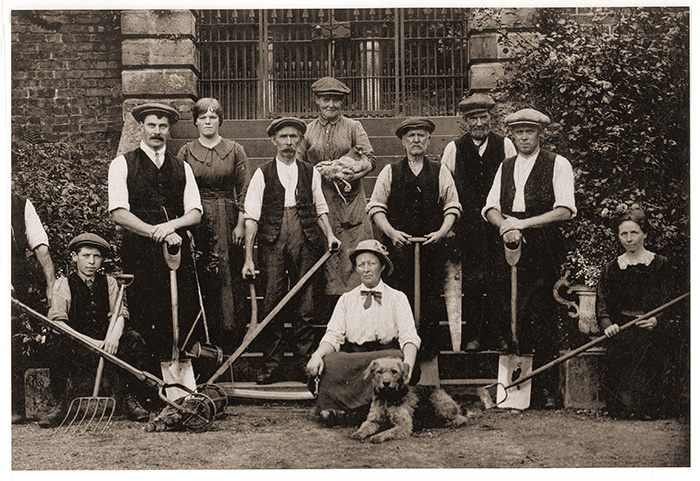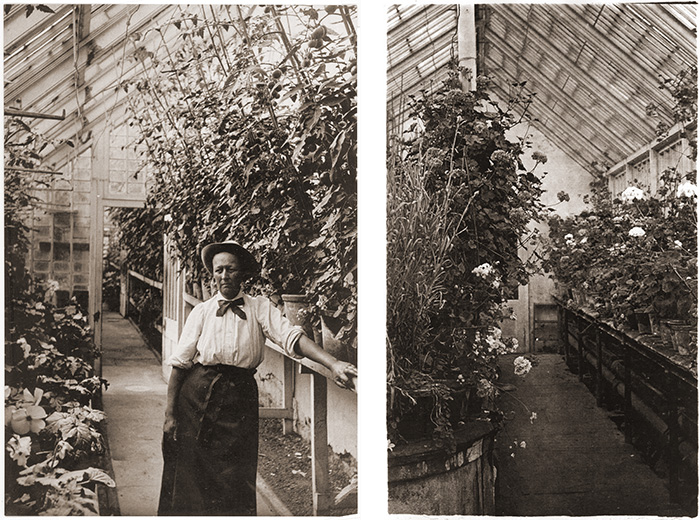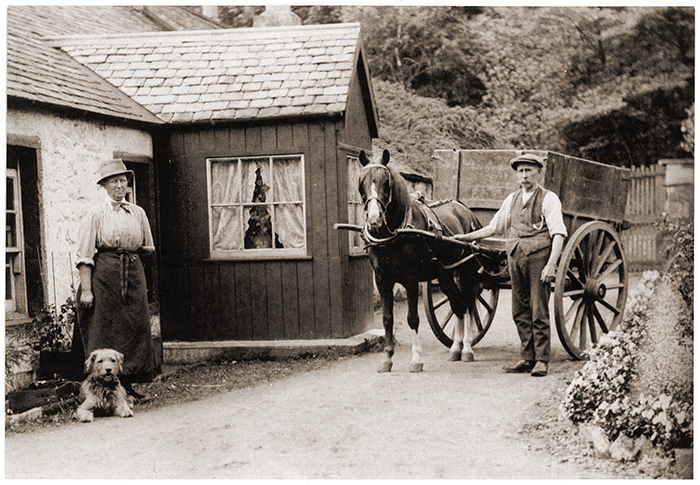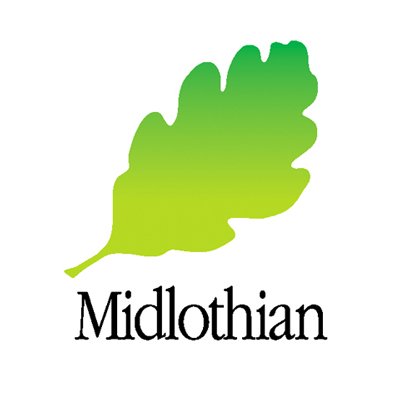Mary Elizabeth Burton - A Head Gardener’s Story
Mar 23, 2022
Mary Elizabeth Burton was the head gardener at Mavisbank for 38 years from 1896 to 1934, not an unusual story today perhaps, but Mary is believed to be the first female head gardener appointed in Scotland. She was a pioneer in Scottish horticulture, who, with her quiet determination and perseverance, paved the way for so many women gardeners in the early twentieth Century.

Born in Surrey in 1865, to Scottish parents, Eliza Shiells from Edinburgh and William Paton Burton, an architect and artist. When Mary was seven years old her mother died and she was sent to Edinburgh, together with her two brothers, to live with her great aunt, who was also called Mary (Hill) Burton. This remarkable women was a supporter of the Edinburgh National Society for Women’s Suffrage and an advocate for improving women’s educational opportunities. She successfully campaigned for the admission of female students to the Watt Institution and later became the first women governor of Heriot-Watt College. She clearly inspired the young Mary Elizabeth, whom she always supported and encouraged.
At the end of the nineteenth century, horticultural education and practical gardening experience were the proviso of men only and women were excluded from any formal horticultural classes and gardening apprenticeships as it was considered inappropriate. They were generally employed to work in only the very menial gardening tasks, such as weeding, raking or cleaning, as it had been for centuries. For Mary, it was extremely difficult to gain an education in horticulture through the formally accepted channels open to men. Undeterred, Mary managed to attend a series of evening classes at Heriot-Watt College, directly benefitting from her great aunt’s social reform work in women’s education. In May 1889, she was awarded certificates, in ‘Advanced Principles of Agriculture’.
However, obtaining practical gardening experience for a woman was impossible, so the young Mary honed her horticultural skills in her uncle’s garden in Duddingston and her great aunt’s garden at Liberton Bank House, Gilmerton, Edinburgh. This house still remains today, now a local health centre. It was also the home of the young Arthur Conan Doyle, who lodged with Mary’s great aunt for a while in the 1860’s. Sadly, the garden has long since gone and has now been replaced by the Cameron Toll Shopping Centre carpark.
In 1896 an opportunity arose for Mary to design and work on a garden at Craufurd Bank House, Lasswade, for Professor Sir Patrick Geddes, the renowned Sociologist and Urban Planner, who was a friend of Mary’s great aunt. After a short time with the Geddes family, her gardening skills soon came to the attention of Dr. George Wilson the Medical Superintendent of the ‘Mavisbank Institution for the Nervous’, the private mental hospital, adjacent to the Craufurd Bank House. In a farsighted treatment plan, developed by Dr Wilson, Mary was tasked teaching the female patients basic practical gardening skills, to help their recuperation. Mary’s work was hugely successful and she was soon elevated to Head Gardener, the first women in Scotland to achieve this position in horticultural practice.
In 1906 the Mavisbank Institution was bought by Sir John Tuke, an eminent Scottish psychiatrist and director of the Saughtonhall Mental Asylum, which at the time was situated in what is now Saughton Park, Edinburgh. This hospital had a long tradition of ‘horticultural therapy’ dating back to the 1830’s when William Lowe, a noted botanist in his day, had encouraged patients to work in and enjoy the extensive gardens which surrounded the hospital.
The following year Mavisbank was renamed New Saughton Hall and Mary was able to continue and further develop her work with the patients. During this period New Saughton Hall was extended with several new buildings and improvements to the landscape, including a new circular driveway and gentle grass slopes to the front of the house.
As the hospital expanded, so did Mary’s role as Head Gardener, now in charge of an extended gardening team, consisting of several under-gardeners, and including some female assistants, as seen in this wonderful photograph taken on the steps of the walled garden around 1914.
 Mary and her gardeners.
Mary and her gardeners.
Her responsibilities were extensive. She provided all the vegetables and cut flowers for the hospital on a daily basis, which were grown within the 4 acres of walled kitchen garden. She was in charge of the estate’s livestock, keeping as many as 300 hens, several sheep and pigs for meat production. Mary also had the maintenance of the 100 acres of hospital grounds to supervise, in particular the care of the recreational facilities, which included a cricket pitch, small golf course, tennis courts and croquet lawn. Mary’s role as Head Gardener was central to the therapeutic treatment and recuperation of the patients.
 Mary in the tomato house at Mavisbank in 1914; The Carnation House produced flowers for New Saughton Hall
Mary in the tomato house at Mavisbank in 1914; The Carnation House produced flowers for New Saughton Hall
 Mary with Mr Donald Munro, an under gardener, at the gardener’s house around 1914.
Mary with Mr Donald Munro, an under gardener, at the gardener’s house around 1914.
Mary’s whole life was dedicated to the practice of horticulture, which she pursued in tandem with her role as Head Gardener. She regularly exhibited at local Horticultural Shows, winning various medals and prizes for her flowers, fruit and vegetables. At the 1911 and 1912 Dalkeith and District Horticultural Society Show, she was the only female principal prize winner, winning the competition for the best collection of vegetables.
Over the next few years, Mary began to build up quite a reputation for her expert knowledge in potato growing, winning a gold medal for her potatoes and cauliflowers at the Rose and Vegetable Exhibition in Edinburgh in 1917. By 1921 she was the principle prize winner at the Royal Caledonian Horticultural Society’s ‘Potato Conference and Exhibition’, in London.

Mary’s potato crop in the Mavisbank walled garden.
Mary was competing at the highest level against male gardening experts and was usually the only female exhibitor of vegetables at these shows.
By her mid-thirties, she had developed links with the governance of the Scottish horticultural profession. In 1901 she joined The Scottish Horticultural Association (SHA), one of only 13 female members, out of 1,000 ordinary members. She took an active part in the Society, exhibiting flowers and vegetables at their monthly meetings and writing several papers on plant cultivation and propagation.
She joined the Royal Horticultural Society and was elected a fellow in 1912. Two years later Mary was elected to serve as a Council member of the SHA, the first women ever to do so. Mary dedicated considerable time to the business of the SHA and by 1917, she was voted as one of their Vice-presidents of Association, and was the first women ever to hold this office.
On 20 January 1920 Mary Burton was unanimously elected as the SHA’s first female President. She was clearly respected and valued by the Association’s largely male membership. As President she championed the cause of women in horticulture, in particular recognizing the great contribution women had made during the First World War.
One year later, Mary was guiding the SHA through a merger with the Royal Caledonian Society. By the end of 1921, she was elected to the new Society’s Council, becoming the first women office bearer in the history of the Royal Caledonian Society (founded in 1809). She was also appointed as a judge in all the Society’s horticultural shows and made it her mission to increase the number of women members. At the RCHS’s AGM in 1924, Mary was elected as one of four Vice–presidents and the only female office bearer in the Society, a positioned she retained for the next four years.
Mary retired from New Saughton Hall in 1934, and in that same year she became the first woman to be awarded the Associate of Honour Medal by the Royal Horticultural Society, for her distinguished service to horticulture. Her assiduous devotion to the Royal Caledonian Horticultural Society was also rewarded when she was nominated unanimously for the coveted Patrick Neill Medal in 1942. Once again, she was the first female recipient of the prize, which was presented to her at the society’s AGM on 13 January 1943.
After her retirement and well into her seventies, Mary continued to advise on the layout of gardens and always maintained her important links with a number of horticultural societies.
In December 1944 ‘The Gardeners Chronicle’, reported the death of Mary E. Burton, in Edinburgh, with this very fitting testimonial:
She was an outstanding figure in the horticulture of her time. Her loyalty to her calling, her sense of the fitness of woman’s place amidst flowers, fruits, and vegetables, her nobleness of purpose and resolution in the execution of her work made her an example to all. Her many friends will all miss that quiet lady of character, now called to the everlasting garden.
During her lifetime Mary gained huge respect for her dedication, professionalism and horticultural expertise, which made her a highly valued member of the horticultural world during the first half of the 20th century. Her influence directly led to the acceptance of women within modern horticultural practice.
Perhaps less well documented, is the fact that Mary Burton should also be considered a pioneer in the use of recreation, outdoor spaces and gardening as an important therapy for those with mentally issues. The value of nature, as an essential part of our health and well-being has now been rediscovered. Mavisbank and its designed landscape has played a similar role to that created by Mary Burton over a hundred years ago, today helping local people access much needed open space during the COVID pandemic.
This remarkable link between past and present, makes the project of restoring Mavisbank with the ambition of using the grounds to support health and wellbeing, in a time of COVID recovery, even more compelling.
Blog written by Sarah Baron, Mavisbank Trust trustee.
 An advert for a gardener for Mavisbank dated 1906.
An advert for a gardener for Mavisbank dated 1906.




